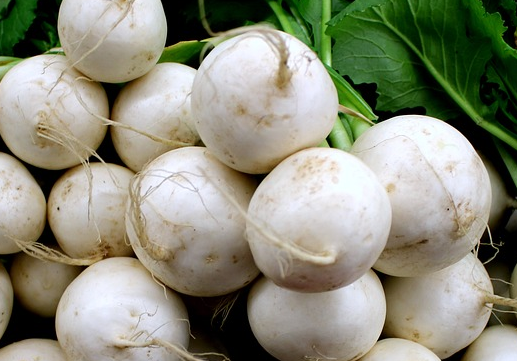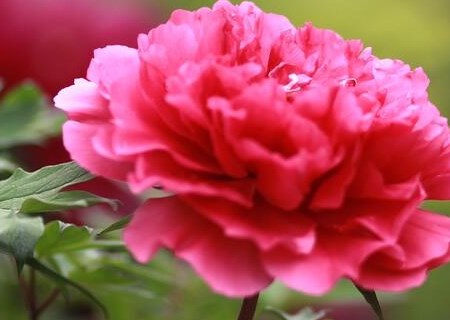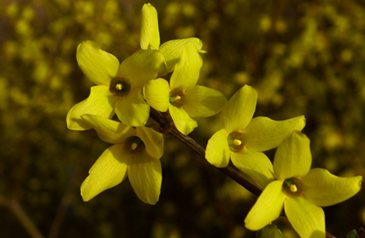What is the planting time and method of blue flower seed and radish? What should I pay attention to?
Radish root for vegetable consumption; seeds, fresh roots, withered roots, leaves are all used as medicine, seeds eliminate food and expectoration, fresh roots quench thirst, aid digestion, withered roots benefit two defecation, leaves treat primary dysentery, and prevent dysentery, so what is the planting time and method of blue flower radish? What should we pay attention to? Radish planting time: radish can be planted in four seasons in areas with suitable climatic conditions, and it is mainly cultivated in autumn in most areas, becoming one of the main vegetables in autumn and winter.

What is the method of growing radish?
1. After the previous harvest, ploughing deeply as early as possible, fully freezing and drying, raking flat, and applying sufficient base fertilizer. Select radish varieties according to the soil conditions, deep soil can be arranged for large deep varieties, cultivated land depth should be more than 33 cm; shallow soil layer, can choose shallow medium-sized varieties, cultivated land depth of medium-sized species about 25 cm, small species about 15 cm. The way of planting border varies according to the variety, soil quality, topography and local climatic conditions. Small and medium-sized radish is cultivated in flat border where there is little Rain Water and good drainage, while large radish needs to be cultivated in high border because of its deep roots and large leaves. In the Yangtze River basin, no matter large or small radish, deep ditch and high border are mostly used to facilitate drainage and irrigation. Generally, the border is 20-27 cm high, the border width is 2 m, and the groove width is 40 cm.
2. The root system of radish is well developed, so it is necessary to apply sufficient base fertilizer. Before soil preparation, 100 piculs of farm manure such as rotten pig and cow manure, 25 kg calcium superphosphate and 50 kg compound fertilizer were applied. After ploughing into the soil, the soil was raked flat, so that the soil was loose, fine and even, and the border surface was smooth.
It should be noted that:
1. Virus disease: mosaic appears after onset. The leaves are shrunken and deformed, the plants are short and the roots are underdeveloped, resulting in a serious lack of plants and reducing yield. The disease is transmitted by aphids, and high temperature (more than 28 ℃) and drought are beneficial to the occurrence of the disease. Prevention and control can be carried out according to the following measures: early control of aphids; strengthening fertilizer and water management in high temperature and drought season to enhance plant disease resistance; timely sowing; reasonable rotation.
2. Black rot: after being susceptible to the disease, the vascular bundles of the root become black, and the inside of the fleshy root becomes black and rotten, resulting in black core, hollow and particularly smelly qi. Control should be done with cruciferous vegetables rotation; timely control of cabbage insects, yellow striped beetle and other pests; with streptomycin sulfate 200 mg / kg (equivalent to 0.02%) concentration spray.
3. Aphids mainly harm the leaves of radish. Groups gather on the back of the leaves and heart leaves to suck juice, so that the edge of the damaged leaves curl backward, leaves wrinkle, and gradually lose water and yellow, so that the plant shows short, dysplasia, until death, in addition, it can also spread virus disease. It can be sprayed with 1000-2000 times of imidacloprid wettable powder or 3000-4000 times of aphid spray.
4. Pieris rapae adults lay eggs on the back of the leaves, like vertical wheat grains, and endanger the vegetable leaves after hatching. With the increase of insect age, the damage became more and more serious, and sometimes only leaf veins remained, which affected the growth and development of plants. And feces pollute the leaves and spread soft rot. The 1st-3rd instar larvae should be sprayed with 1500 times of high efficient B.T emulsion (8000 international units / microliter), 0.1% washing powder should be added when preparing the liquid, and cloudy days with light temperatures higher than 15 ℃ should be applied after 4 p.m. on sunny days, or 2000 times of Yitaibao EC should be sprayed on sunny days.
5. The adults of cabbage borer lay eggs on young leaves such as heart leaves, and after hatching, the hidden leaves are damaged first, and after the 2nd instar, the leaves are damaged, so that the heart leaves die, the heart leaves die from the heart leaves or petioles at the 4th to 5th instar, and the injured plants die. When you grasp the egg incubation period and first see the heart leaf damage, spray with 2.5% kungfu EC 2500 times, or 50% phoxim EC 1000 times.
6. The low instar larvae of Plutella xylostella feed on the mesophyll, leaving the epidermis, and the injured leaves show transparent spots one by one. After the 3rd instar, the vegetable leaves are eaten into holes and lacerations, and in severe cases, the whole leaves are eaten into a network. The larvae in the seedling stage like to concentrate on the heart leaves, which seriously affects the plant growth. It can be sprayed alternately with 1500 times of high efficiency B.T emulsion (8000 international units / microliter), 2000 times of 5% Yitaibao EC and 2000 times of 2.5% deltamethrin EC.
7. The yellow striped jumping beetle bites the leaves with adults, forming many small holes. When the damage is serious, the whole seedling dies, and the adults also bite the buds and young leaves of the radish. Fruit stalks, tender shoots, resulting in reduced production. On the other hand, the larvae eat the root bark and bite the fibrous root, which affects the plant growth and the commodity of fleshy root. The control methods are as follows: pay attention to cleaning the countryside after harvest, ploughing and drying fortresses and frozen castles in time to reduce the source of insects; spray with 1000 times of 50% phoxim EC, or spray with 4000 times of 2.5% cypermethrin EC.
Time: 2019-03-18 Click:
- Prev

How to plant peonies? How to carry out maintenance management? How's the profit?
Peony flowers, beautiful color, jade smile pearl fragrance, elegant and unrestrained, magnificent, known as the king of flowers. Peony flowers are large and fragrant, so it is also known as the national color and Tianxiang, which is widely cultivated all over the country at present. Do you know how to grow peonies? How to carry out maintenance management? How's the profit? Planting technique of peony flower
- Next

How much is the price of Oleaceae forsythia (yellow flower pole) per jin? How to grow forsythia flower?
Forsythia, also known as Huanghuagan, Huang Shoudan, can be planted as a flower Gracilaria or embankment tree. Forsythia forsythia leaves bloom in early spring, full of golden, gorgeous and lovely, is an excellent flowering shrub in early spring. Stems, leaves, fruits and roots can be used as medicine. Do you know how much forsythia costs per jin? How do you plant it? According to the market,
Related
- Fuxing push coffee new agricultural production and marketing class: lack of small-scale processing plants
- Jujube rice field leisure farm deep ploughing Yilan for five years to create a space for organic food and play
- Nongyu Farm-A trial of organic papaya for brave women with advanced technology
- Four points for attention in the prevention and control of diseases and insect pests of edible fungi
- How to add nutrient solution to Edible Fungi
- Is there any good way to control edible fungus mites?
- Open Inoculation Technology of Edible Fungi
- Is there any clever way to use fertilizer for edible fungus in winter?
- What agents are used to kill the pathogens of edible fungi in the mushroom shed?
- Rapid drying of Edible Fungi

